Who Creative Director – David Abraham Director Retail – Rakesh Thakore Director sales – Kevin Nigli
What comes to mind with Abraham & Thakore is their vision for the contemporary Indian woman, whose myriad influences they give extraordinary context every season. Beginning in 1992 after their graduation, they have matured into one of the oldest and most respected design houses. Collaborations have been significant to their retail equation; including a craft-inspired collection for West Elm, loungewear and home accessories for Harrods and a bi-annual range of Benares weaves for sari brand Ekaya. Below is a recount of their journey so far:
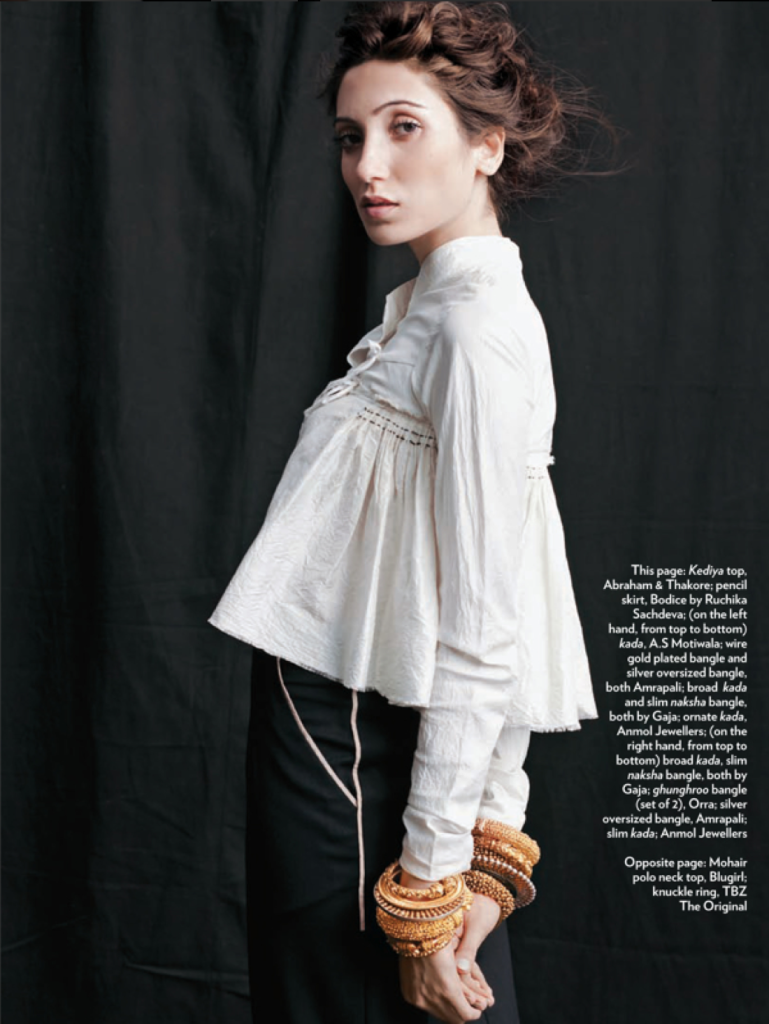 Above: image | Bikramjit Bose stylist | Nidhi Jacob source | Marie Claire India October 2012
Above: image | Bikramjit Bose stylist | Nidhi Jacob source | Marie Claire India October 2012
The Beginning When we started out, India’s fashion landscape was sparse. Fashion was considered rather an exotic beast, favoured by the rich and eccentric. There was no real sense of community amongst fashion designers, but as Rakesh and David are graduates of the NID they had close links with the NID design community. Kevin graduated from NIFT much later, from the second batch. There still wasn’t a large number of fashion designer graduates then.
Rakesh grew up on a huge farm in Tanzania and went to boarding school in Gwalior. David initially grew up in Singapore then moved to Bangalore before joining the NID, Rakesh was his classmate in the Textile Design faculty. Kevin studied commerce and grew up in Kolkata before coming to Delhi to study fashion at NIFT. Like many other Delhiites we are refugees too in a sense, and Delhi has become home for all of us. Our disparate backgrounds and childhoods from different cities and cultures is key to our approach to design.
Abraham & Thakore started with a few scarves and kimonos which we managed to sell to The Conran Shop in London. That was the first triumph. For the first few years we visited London every few months with heavy bags of samples which we carried around from buyer to buyer, store to store, persisting and pestering buyers. With the help of friends, introductions and sheer doggedness we began to sell in Liberty, Browns and Selfridges.
Above: image | A/W 2015 ‘Old New’ collection details source | Abraham & Thakore Lookbook
For A/W 2015, we looked at Kantha, a type of embroidery from West Bengal and Odisha. Traditionally, old saris and fabrics were layered and hand-stitched together to make new fabrics to be used for many different purposes. This traditional Indian approach to recycling makes this craft particularly relevant in the context of our concerns with sustainability. In our exploration of sustainable textiles for the collection, we also looked at other forms of recycling. We created sequins for evening wear from discarded hospital X rays and film. We sourced antique recycled brocade borders and ribbons, and converted snaps, hooks and studs into decorative ornaments.
The Abraham & Thakore woman Fashion is a manifestation of identity, and for many of us in India today we constantly negotiate a path that balances several identities, traditional and modern. We believe that they are simply two aspects of the same persona. Having said that, our customers for the same leopard skin sari have ranged from one of the coolest young fashion models to an older professional, a mother of high school children.
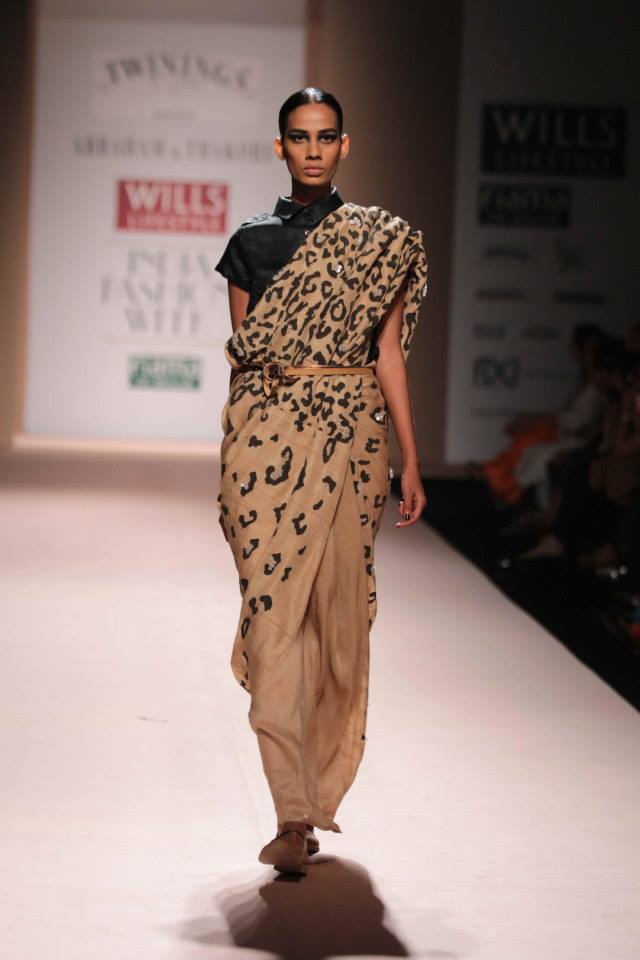 Above: image | A&T leopard woven sari from A/W 2014 source | Vogue.in
Above: image | A&T leopard woven sari from A/W 2014 source | Vogue.in
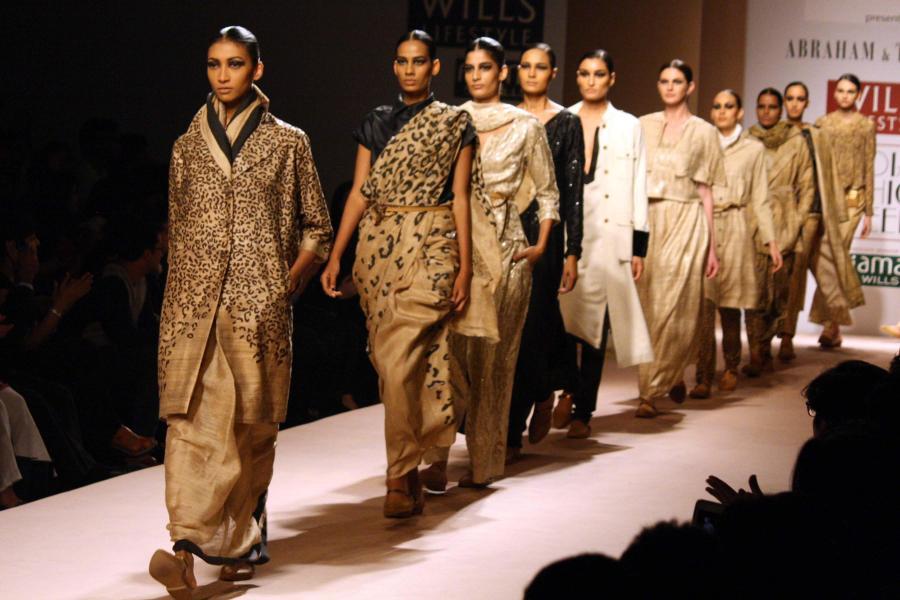
Above: image | A/W 2014 source | WIFW
Design principle A common concept will often inspire us to help us create the different collections for fashion and home. We make the necessary changes according to each category as is relevant. For example, the colour story of a dress may not be as effective in a quilt for example. Home textiles require different functionality and fabric constructions and weights that cannot be used in apparel. But we unite all these collections with a common thread so that our signature for the season is apparent.
Every time we see a beautiful sample, or an exquisitely hand woven textile developed by us in our studio, we realise that this is what we love, and this is what we want to do.
Market To be honest, there has been no grand strategy. We enjoy what we do (most of the time) and our growth has been fairly organic. Key to our design expression has been our belief in the Indian craft and textile traditions and our continuing search for contemporary expressions for these traditions. We have always located our design voice specifically within this culture regardless of the markets we’ve sold to with the belief that every culture creates a distinct vocabulary.
Sustainability, beyond its moment We hope to continue our practice of sustainability as much as we can. While the actual recycling of used material is one approach, another design approach is with regard to silhouette. We reiterate our commitment to certain classic silhouettes season after season as we believe that trends need not be so ephemeral. Handloom and textile craft are also an important focus for us as they have a small footprint, and create employment in small traditional craft clusters that are decentralised all over the country. Besides, of course, the fact that the richness of India’s craft tradition is unbeatable and provides the creative force – indeed the very raw material for much of what is the finest and most unique about Indian fashion.
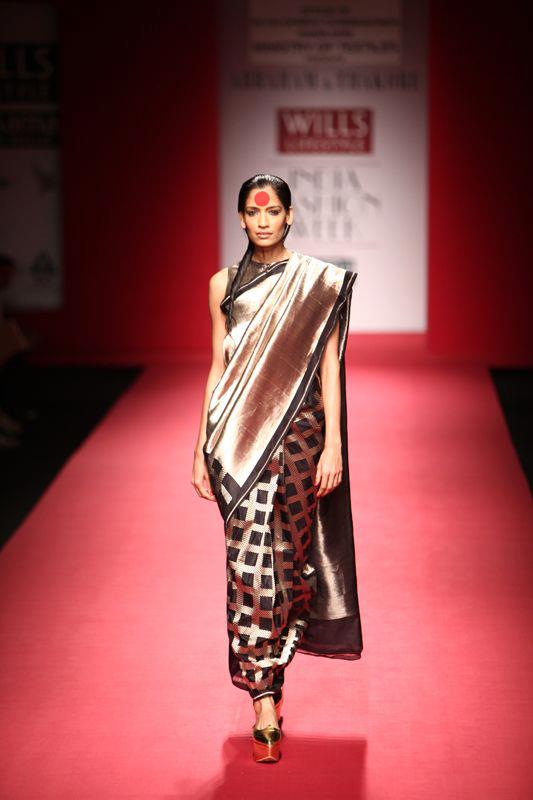 Above: image | A/W 2013 source | Vogue.in
Above: image | A/W 2013 source | Vogue.in
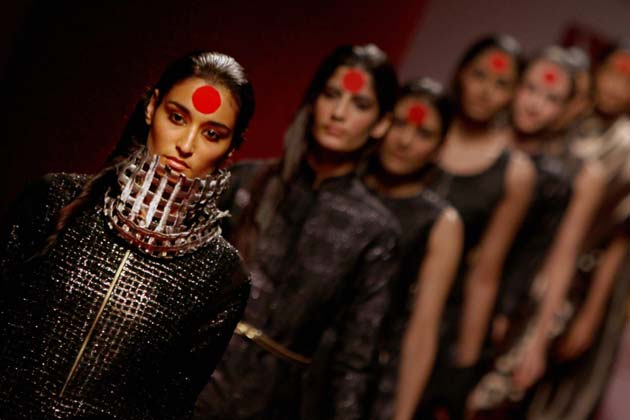
Above: image | A/W 2013 source | WIFW
People We always mention Martand Singh, who helped push us into starting this business at a time when both Rakesh and David were unemployed and wondering what to do. (Kevin joined a few months later). Martand Singh’s work with traditional textiles in India, his exacting taste and refined sensibility were an inspiration.
Creative conflict Amongst the three of us, David’s role is that of creative director, Rakesh looks after handloom weaving development and oversees the retail operation and Kevin handles sales and marketing. But having said that, all three of us constantly interact, bounce ideas off each other and discuss design issues from seasonal colour forecasting to the shape of a collar. We are not afraid to disagree with each other and often our arguments form a crucial part of the creative development of each collection.
We are always looking for new ideas. We follow the work of new creative professionals everywhere in the world which is always exciting and inspiring as there is always incredible stuff being done everywhere. And ultimately, regardless of the source of our inspirations we always tell the story in our own particular voice which probably contributes to a sense of consistency.
Digital references SHOWstudio Remodelista The Hindu The Guardian Style.com The Business of Fashion Adore Jazz Venice Classic Radio The Sartorialist
Other references Abida Parveen, Bach, Detective Byomkesh Bakshi, In The Mood for Love, Diane Arbus, Marlene Dumas, Geoffrey Bawa
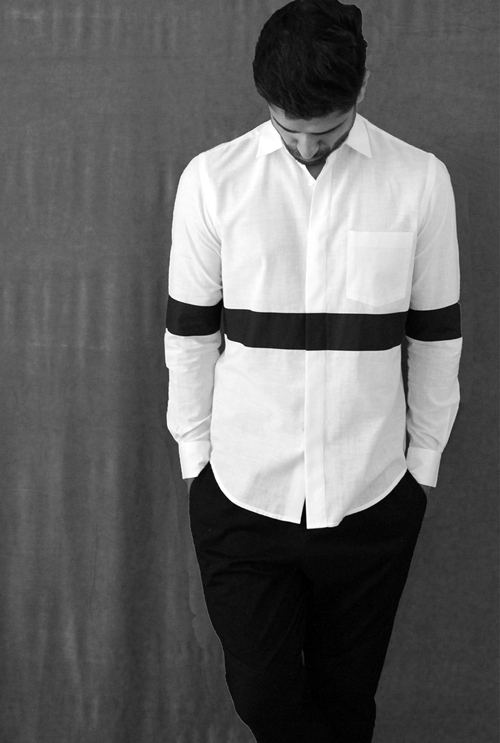
Above: image | S/S 2015 menswear source | Abraham & Thakore
Embracing Fashion Week Our first show in 2010 was an expression of our intent to focus our business directly at the home market. For the first 10 years of our business, we were largely export oriented and two factors made us reexamine this. The first was the big recession in the West which hit many of the retailers we worked with overseas, while the other was the enormous potential for growth in India.
We are usually able to prepare just one new collection for the runway each year. We tend to show Autumn/Winter in March. This is because we usually take around four months to develop a runway collection from fabric to silhouette, due to the complexity and slow nature of textile development. We also use this as an opportunity to experiment with new techniques and structures and these are not always successful.
We see each “show” as an opportunity to communicate specific interests and concerns of ours. Working with traditional clothing such as the saree, the salwar kameez and bringing these elements into our understanding of “fashion” is important. In textiles, experiments with tussar silk yarn, re-imagining Benares brocades and this season’s investigation into kantha and sustainability are some of the issues we’ve looked at. We also see them as an opportunity to bring our voice to the current conversation that is fashion in India.
The process has been rather organic and we moved from situation to situation just learning along the way from both our mistakes and achievements. The most important learning has been the realisation that we have to trust our own instincts ultimately, to be true to what we believe in and try not to make a false note. And to keep on going.
Work History DAVID ABRAHAM: Abraham & Thakore, Noida, Creative Director: 1992 – present RAKESH THAKORE: Abraham & Thakore, Noida, Director Retail: 1992 – present KEVIN NIGLI: Abraham & Thakore, Noida, Director Sales: 1992 – present
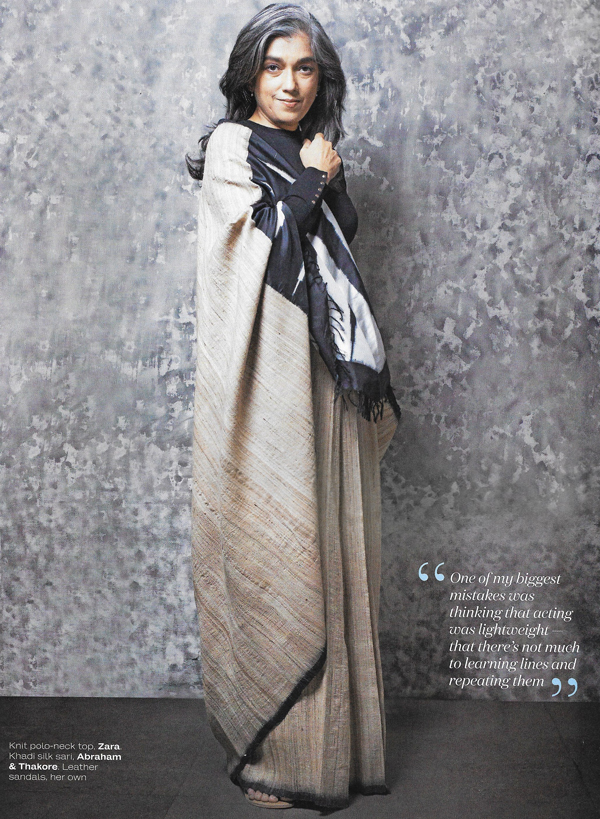
Above: image | Actress Ratna Pathak Shah in a sari from A/W 2015 source | Amit Thakur for ELLE INDIA January 2015


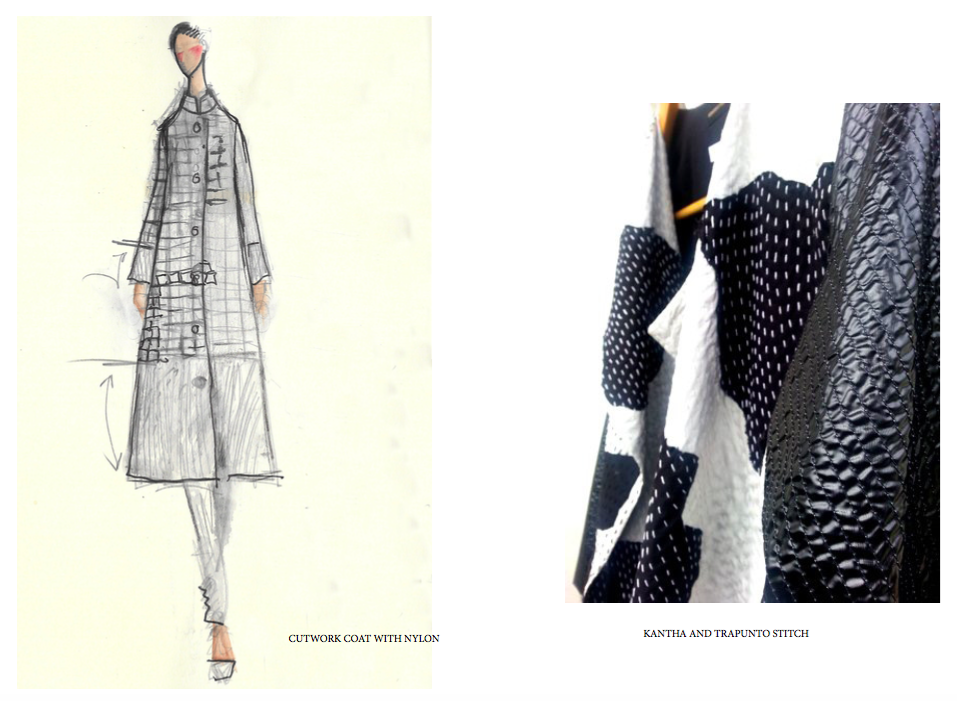
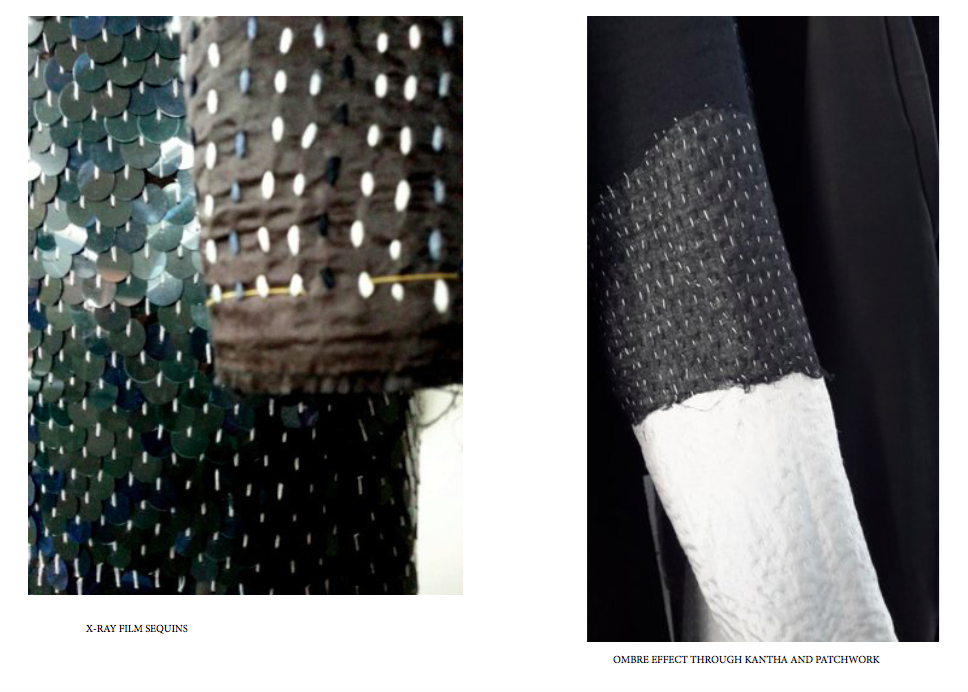


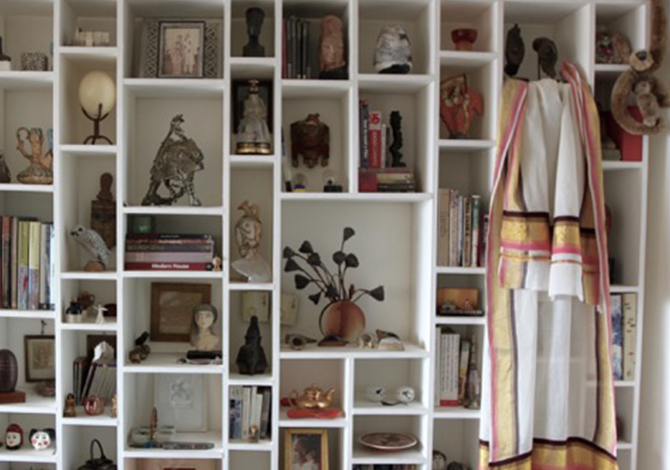
Lovely…as always.
That banner image was clicked by me when I used to work with Abraham & Thakore last year.
Payal Roy
Super chic!